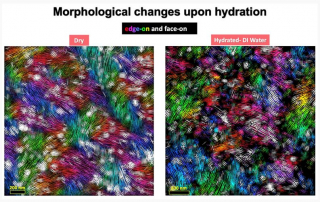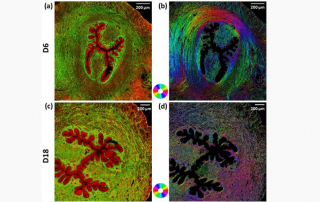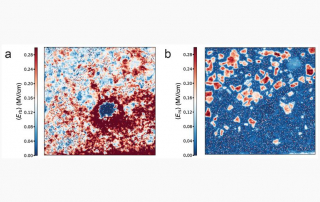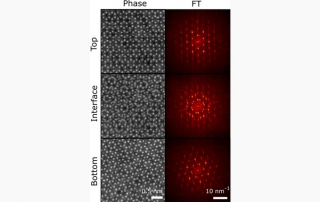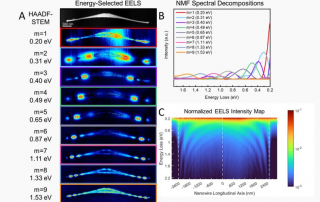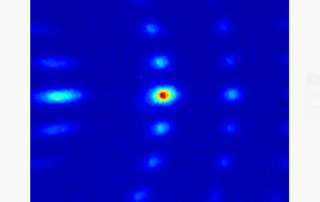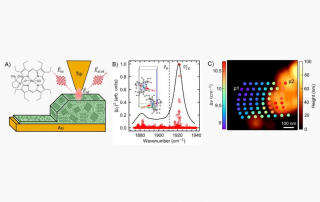The hierarchical structure of organic mixed ionic–electronic conductors as revealed with 4D-STEM
Polymeric organic mixed ionic–electronic conductors (OMIECs) underpin several technologies where their electrochemical properties are desirable. These properties however depend on the microstructure that develops in their aqueous operational environment. In relevant experimental conditions, electrolyte-induced swelling amounts to up 20% in volume. We investigated the structure of a model OMIEC across multiple length-scales using cryogenic four-dimensional scanning transmission electron microscopy (cryo-4D-STEM) in both dry and hydrated states. 4D STEM allows us to identify the prevalent defects in the polymer crystalline regions and to analyze the liquid-crystalline nature of the polymer. The orientation maps of the dry and hydrated polymer show that swelling-induced disorder is mostly localized within discrete regions, thus largely preserving liquid crystalline order. Therefore, the liquid crystalline mesostructure makes electronic transport robust to electrolyte ingress. This study demonstrates that cryo-4D-STEM provides multiscale structural insights into complex, hierarchical structures such as polymeric OMIECs, even in their hydrated operating state.
